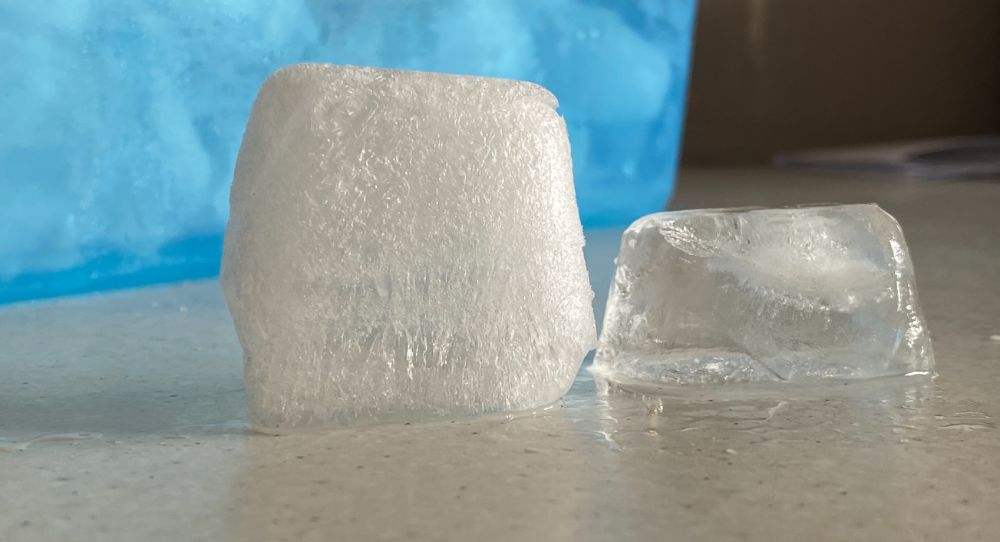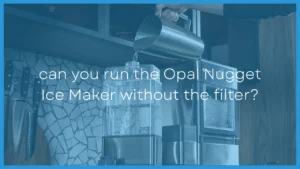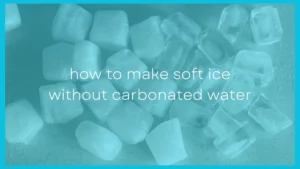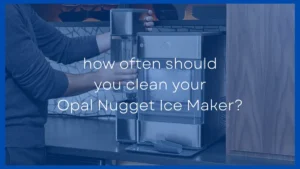You may think all ice is alike, but you can actually make ice softer or harder based on how it's made and each of these types of ice can have it's own benefits and uses.
So what's the major differences between soft ice and hard ice and how do you make each of them?
Soft ice is opaque and contains lots of air bubbles making it less dense and easier to chew. Hard ice is usually completely clear with little to no air bubbles. It melts slower and is denser than soft ice making it ideal for drinks like cocktails or whisky that you do not want diluted by the melting ice.
Soft ice is great in some circumstances where people want to eat the ice. Hospital ice and chewy ice and popular forms of soft ice and people absolutely love them.
Hard ice is also great in many circumstances too. Being completely clear it can look amazing in high end drinks and due to the fact it melts slower than soft ice it is preferred in drinks like whiskey where the ice is there to chill the liquor but not to dilute it.
So, let’s discuss the differences between these two types of ice in greater detail. I’ll compare them and teach you how to make hard and soft ice at home. So, let’s get into it!
What Is Soft Ice?
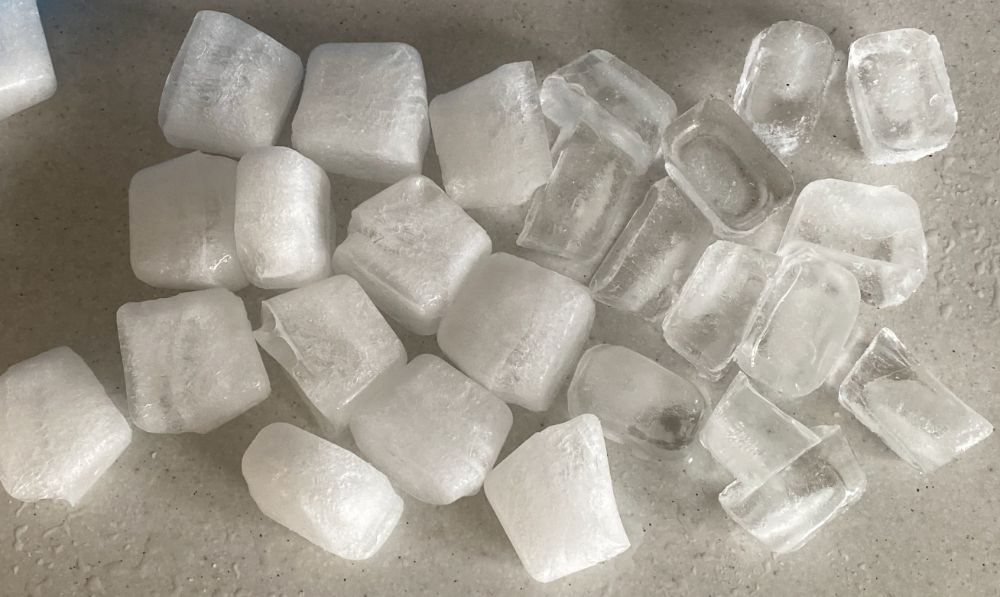
How do you determine if the ice you’re using to cool your drink is hard or soft? The clarity of the ice cubes is a telltale sign of the density of the ice.
Soft ice is white ice. It appears white or cloudy because of trapped air bubbles, usually at the cube's center but sometimes all over. Soft ice melts faster and is easier to break because of these air bubbles.
When water undergoes the freezing process, air moves from the outside of the cube to the center. This air-manipulating process results in the cloudy white color we see in the middle ice cubes. The trapped air also causes the ice to melt faster than ice without bubbles.
However, soft ice can go a step further and be white all over white air bubbles throughout it not just in the center. Soft ice contains a lot of air bubbles all over or is flaked ice that is compressed into cubes.
Nugget ice makers make soft ice by taking flaked ice that is scrapped off the walls of a cylinder and compresses into little nuggets that are extremely soft and chewable. The process of how they work is fascinating and many people believe nugget ice is the best soft ice out there. However, these machines are not cheap – but many people feel that nugget ice machines are worth the money.
The water used to make white, soft ice is also susceptible to impurities. The dissolved minerals and other contaminants found in tap water also add to the cloudiness of the ice cubes. Adding sugar to ice can make it form as softer ice than it otherwise reguarly would because of the impurities in the ice.
The best way to get crystal clear ice is to use distilled water.
What Is Hard Ice?
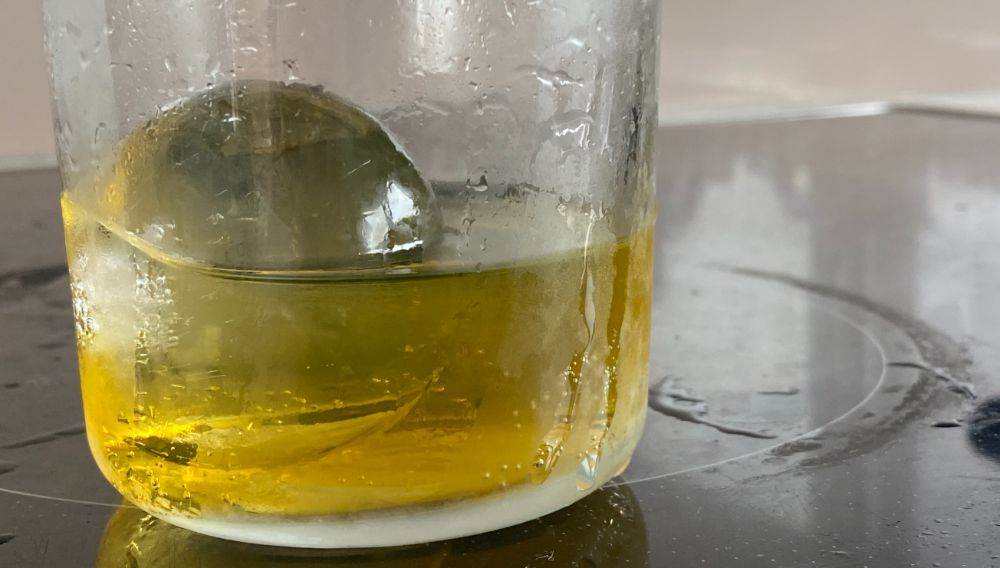
Hard ice, unlike soft, is usually crystal clear. Its clearness is attributed to the purity of the water used to make the ice as well as the lack of air bubbles in the ice. The ice is harder to chew and melts slower than regular ice cubes.
Clear ice is generally viewed as more premium than soft ice because it is made from distilled or filtered water so it often tastes better plus it is completely clear which gives an amazing look when you're used to seeing ice that is slightly white/opaque.
Clear ice is often used in whiskey, cocktails and other expensive drinks and it usually comes in large sizes around 2 inches across – helping them melt even slower than regular ice cubes.
It also keeps your drink colder for longer because the higher density causes it to melt at a slower rate.
What Happens to Ice the Colder It Gets?
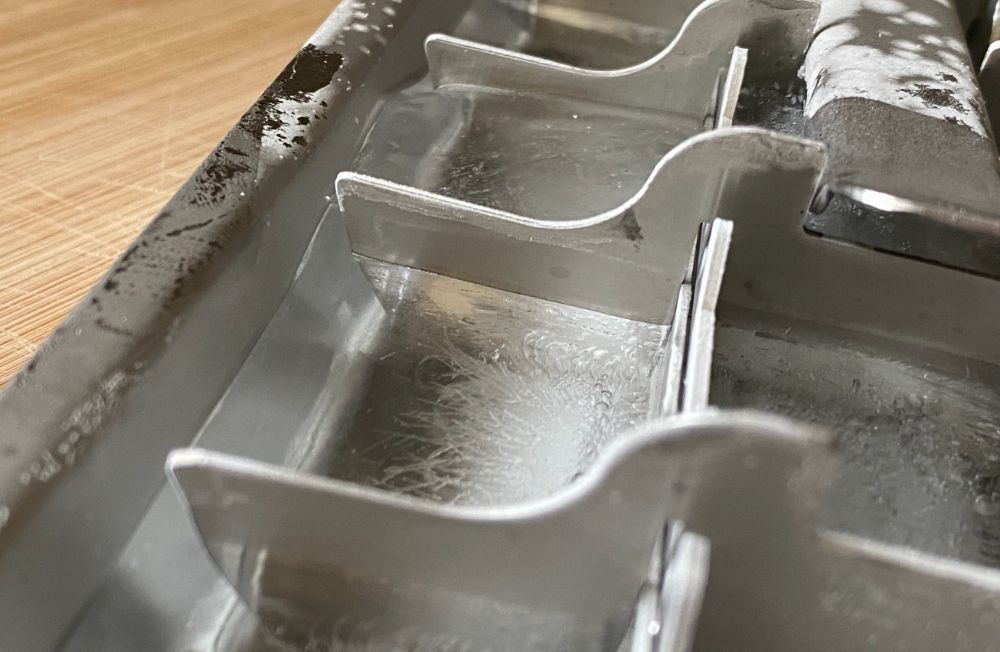
Ice gets harder the colder it gets, but that doesn’t mean that ice will become more transparent as the temperature lowers. Ice frozen at low temperatures is more durable and harder to chip, but it might be as cloudy as soft ice if you use the wrong water or freeze it too rapidly.
Like most things, water gets more rigid when it gets colder. For example, an ice block kept at 0º F (-18º C) is more rigid and durable than ice at 32ºF (0ºC) which is at or near it's melting point.
However, just because colder ice is harder, that doesn’t mean that it is “hard ice.”
Hard ice is clear and has fewer bubbles than soft ice, and water frozen in sub-zero temperatures might still develop cloudiness and pockets of air at the cube’s core.
However, generally speaking the colder you make the ice the harder it will be. So for soft ice you want ice at temperatures close to 32ºF/0ºC whereas for hard ice you want ice as cold as possible and definitely below 0ºF/-18ºC.
Making instant ice in a water bottle is a cool way to make very soft ice. This is because the ice is just under the freezing point and so it is right on the balance of melting and freezing giving it a soft slushy texture.
How To Make Soft Ice
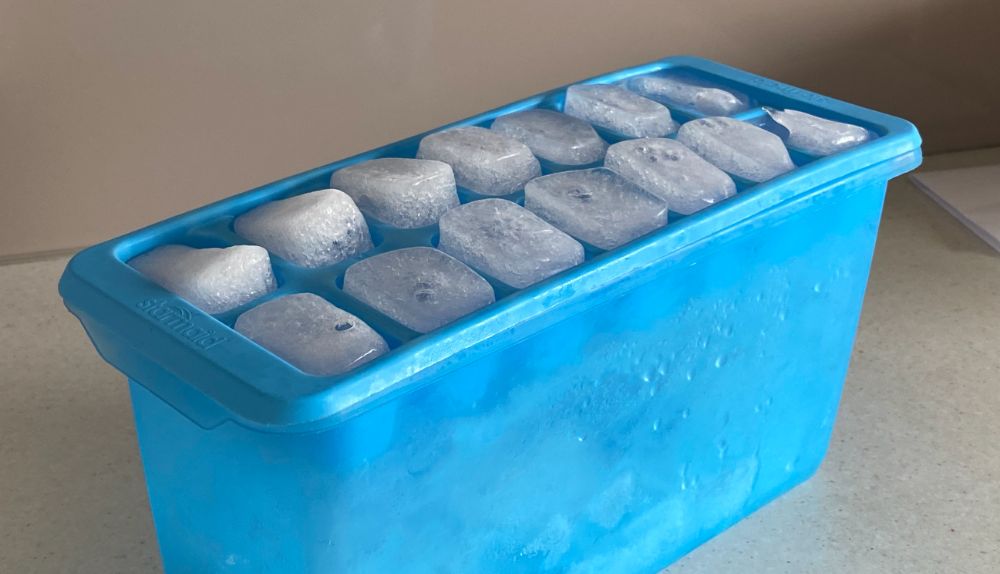
White or soft ice is quite simple to make. All you have to do is get either an ice cube tray or a freezer-safe mold. Fill the mold with carbonated water and place the filled tray in the freezer for a few hours.
As the water freezes the carbon dioxide gas will be released creating lots of air bubbles in your ice making it very soft. You may think it'll make carbonated or fizzy ice but it won't it'll just make soft ice that is full of air bubbles with no fizz left.
Once the water has frozen through, take the ice out of the mold, put it in a container, and repeat the process until you get your desired amount of ice.
If you don’t like large cubes or prefer even softer ice, you can use the GE Opal Ice Nugget Ice Maker which makes soft and small nugget ice cubes.
It makes opal-shaped nuggets perfect for soda, cocktails, or chewing. The best part is that this ice maker can make ice in as little as fifteen minutes.
You can also get nugget ice cube trays that make small nugget ice cubes that are easy to chew. I use these because I don't have space for the Opal machine and my kids absolutely love these ice cubes.
See the latest price of the Silicone Mini Ice Cube Tray at Amazon
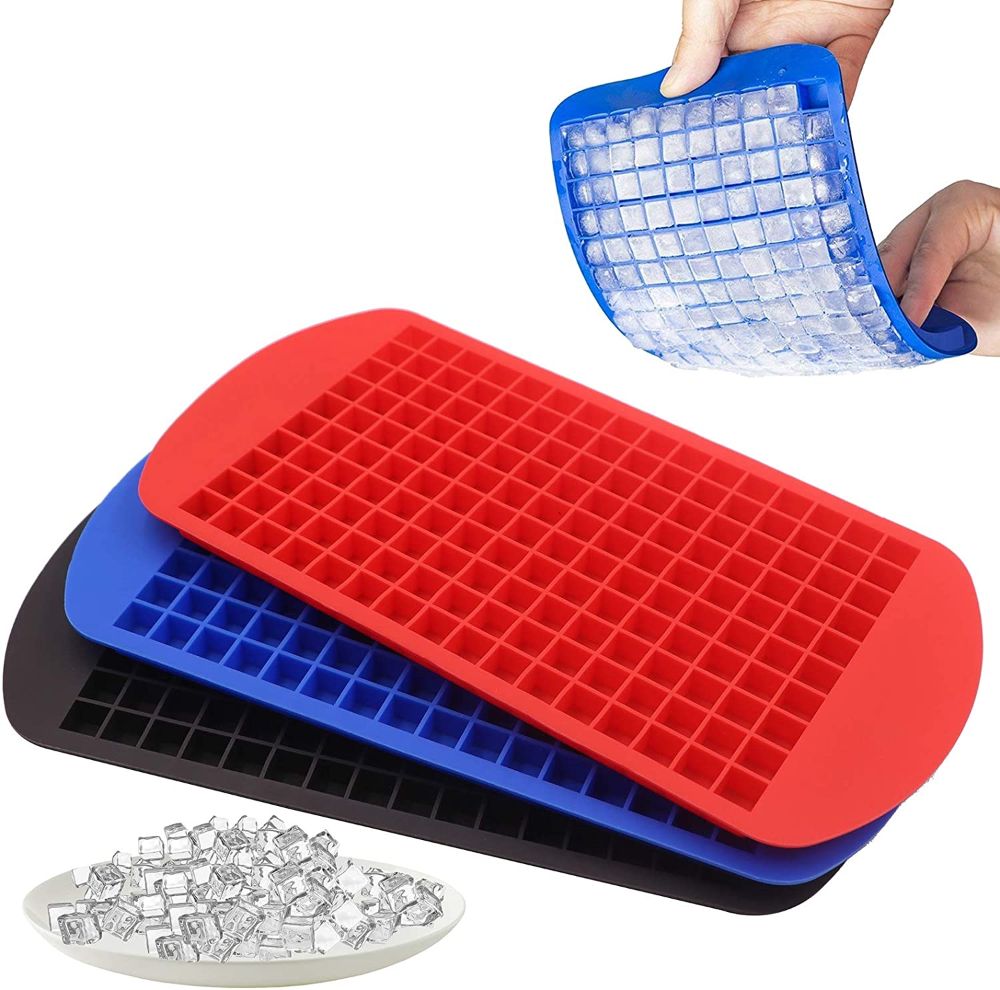
How To Make Clear Hard Ice With Tap Water

Though distilled water isn’t 100% necessary, it does make the clear-ice-making process a little easier. However, if tap water is all that you have available, you can still make it work. This is generally how I make my clear hard ice cubes at home.
When producing clear ice with tap water, the first thing you should do is distill your water if you can be bothered.
So, here’s how to distill water at home:
- Fill a large cooking pot halfway with water from the tap and place it on a stovetop burner at medium heat. Ideally, you want the water to be simmering, not boiling.
- Place a smaller bowl or pot in the water, floating at the top. (Disclaimer: please use heat-resistant glass, ceramic, or metal, NOT plastic. Plastic will melt in hot water)
- Place the pot lid upside down on the pot. Once you have your lid on, grab some ice and put it on the lid to speed up the condensation process.
- Add more ice as needed. Be sure to use an oven mitt when handling the lid and pot because they will be hot.
This process works because the hot water will create steam. Since you trap that steam in with the pot lid, it’ll condense and fall into the bowl. So, the water inside the bowl is distilled and entirely free of minerals!
Now that you have impurity-free water, it’s time to make ice. I've got a full beginners guide on how to get clear ice but the basics are below:
The best way to prevent air bubbles during the freezing process is to freeze your water omni-directionally (freezing the ice in one direction).
For this you need to either use a cooler that you fill 3/4 with water or you need a specialized clear ice tray like those I mention in my list of the best sphere ice cube trays or the best large ice cube trays for clear ice.
I have personally used clear ice cube trays but I've also used the cooler method which is a great way to make a large amount of clear ice in one go. However, it does require some manual labor to cut up the ice.
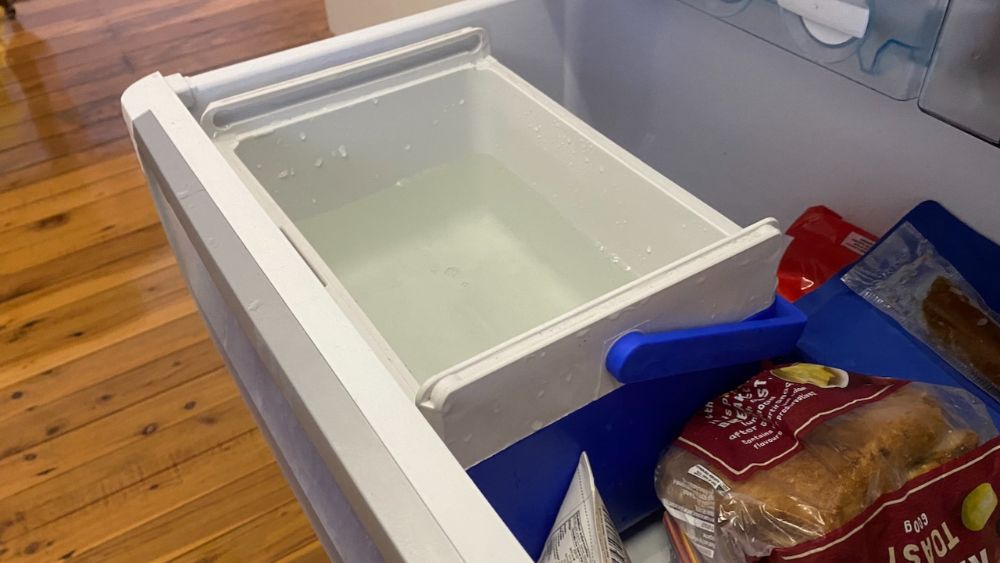
I personally used a Coleman Flip Lid 5-Quart Cooler which is a great size for fitting in almost any freezer and it works great.
Once you have either of these things, ice-making is easy.
- Fill your cooler with your freshly made (or store-bought) distilled water. Be careful not to fill the cooler to the top.
- Next, place the cooler upright with the lid off in the freezer. Turn up the temperature on your freezer to prevent the freezing from happening too fast.
- Once the water is frozen, take the cooler out of the freezer. Getting it out before its completely frozen will allow you to separate the water that has traces of impurities.
- Allow the ice to melt a little, and then take out of the mold or cut it.
To cut the ice, use a serrated knife and carefully cut the ice into your desired shape. You can also use an ice pick, but this won’t give you even ice cubes.
The freezing process has to be omnidirectional, or water bubbles will form and get trapped, causing the ice to be white. This is why we use a cooler – so the ice freezes from the top down.
Conclusion
In conclusion, the most significant difference between hard or clear ice and soft or white ice is the density. Soft ice has air bubbles trapped by the freezing process, making it appear white and creating less density.
Hard ice is frozen in an omni-directional way, which prevents air bubbles, increases density, and uses distilled water, making the ice appear clear.
Both types of ice are widely popular for different kinds of drinks. Thankfully, both soft and hard ice is relatively easy to make. Hard ice requires distillation, but the ice is easy to make after that process is complete.

